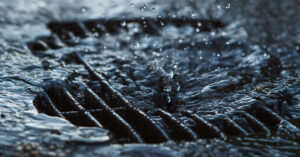A sewer lateral, also known as a sewer line or sewer lateral pipe, is an essential part of a property’s plumbing system. It refers to the underground pipe that connects an individual building’s plumbing to the main public sewer line or septic system.
Sewer laterals are responsible for transporting wastewater, including wastewater from sinks, toilets, showers, and other plumbing fixtures, away from the building and into the larger sewage system for proper treatment or disposal.
Key points about sewer laterals:
- Private property connection: The sewer lateral is located entirely on private property, connecting the building’s plumbing system to the public sewer system or septic tank. This means that property owners are responsible for maintaining, repairing, and replacing their sewer laterals.
- Material: Sewer laterals are typically made of various materials, including PVC (polyvinyl chloride), cast iron, clay, or concrete. The choice of material may depend on local building codes and the age of the property.
- Cleanouts: Sewer laterals often have cleanouts, which are access points that allow plumbers to inspect and clean the sewer line. Cleanouts make it easier to perform maintenance and remove blockages if they occur.
- Utility easements: In some cases, sewer laterals may cross through utility easements, which are areas designated for utility companies to access and maintain underground utility lines. It’s essential for property owners to be aware of any utility easements on their property and to avoid building or planting in these areas.
- Responsibility: Property owners are responsible for maintaining and repairing their sewer laterals up to the point of connection with the public sewer main or septic system. Issues with the sewer lateral can lead to backups and blockages, potentially causing damage to the property and requiring costly repairs.
- Inspections: When buying or selling a property, sewer lateral inspections may be required or recommended. These inspections help identify any existing or potential issues with the sewer lateral before they become significant problems.
It’s important to keep sewer laterals in good condition to prevent blockages and avoid sewage backups into the building. Regular maintenance, avoiding flushing non-flushable items down the drains, and promptly addressing any plumbing issues can help ensure the proper functioning of the sewer lateral and the overall plumbing system. If you suspect a problem with your sewer lateral, it’s best to contact a licensed plumber to inspect and address the issue.








